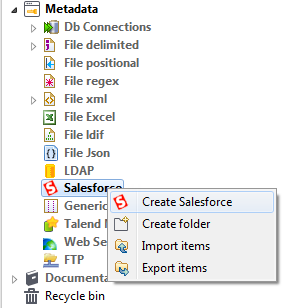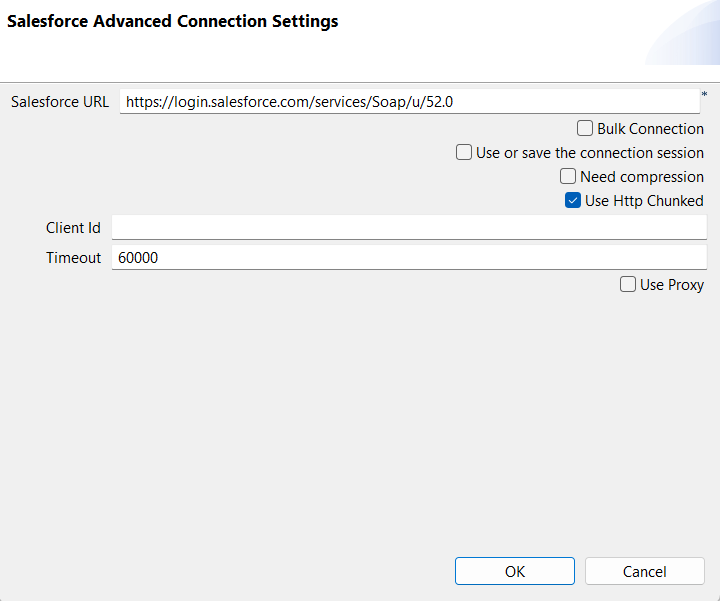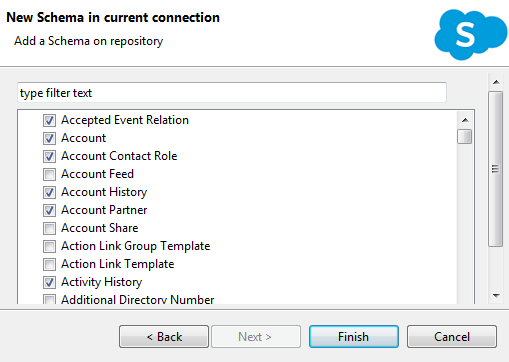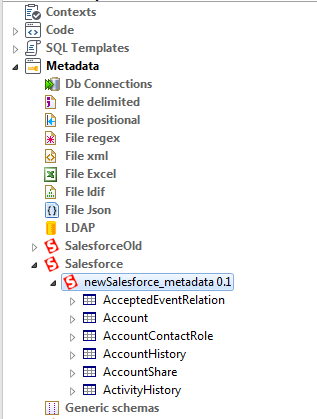Centralizing Salesforce metadata
Procedure
Results
You can now drag and drop the Salesforce connection or any schema of it from the Repository onto the design workspace, and from the dialog box that opens choose a Salesforce component to use in your Job. You can also drop the Salesforce connection or a schema of it onto an existing component to reuse the connection or metadata details in the component. For more information about dropping component metadata in the design workspace, see Using centralized metadata in a Job.
To modify the Salesforce metadata entry, right-click it from the Repository tree view, and select Edit Salesforce to open the file metadata setup wizard.
To edit an existing Salesforce schema, right-click the schema from the Repository tree view and select Edit Schema from the contextual menu.
Did this page help you?
If you find any issues with this page or its content – a typo, a missing step, or a technical error – let us know how we can improve!





